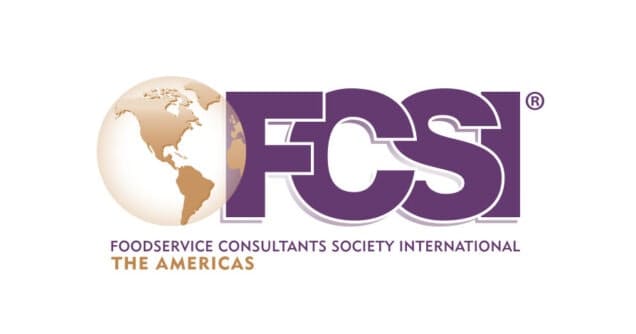
The foodservice industry has been hit hard across the Americas due to coronavirus and the lockdowns imposed in various countries.
As of May 25, there have been more than 2.4 million confirmed coronavirus cases and more than 143,000 deaths reported across the region. The US still has the highest recorded number of cases but, in recent days, Brazil has exceeded Russia to take the number two spot.
With more daily reported cases of Covid-19 than Europe and the US, Latin America was recently described as the epicenter of the pandemic by head of the Pan American Health Organization, Carissa Etienne.
“For most countries in the Americas, now is not the time to relax restrictions or scale back preventive strategies. Now is the time to stay strong, to remain vigilant and to aggressively implement proven public health measures,” she said.
Lifting lockdown
Nevertheless, Mexico is beginning to lift lockdown, with a phased reopening being rolled out nationwide, despite resistance from some municipalities. This will use a traffic light system of red, amber, yellow and green, though it is not clear under which phase the foodservice industry will be able to welcome back guests.
Meanwhile, states across the US are also beginning to lift lockdown restrictions. While some fear this move is premature, it is potentially good news for restaurants, who can begin to make preparations for customers to dine in – albeit at a reduced capacity.
Some provinces across Canada are equally allowing cafes, bars and restaurants to operate at 50% capacity, with British Columbia and Alberta leading the way. However, industry association Restaurants Canada argues that many foodservice businesses may not have enough cash flow to successfully reopen their doors.
Rental relief
Cash flow is a big issue for countless restaurant businesses, big and small, across the Americas. Paying the bills during this time is proving to be no easy task and many businesses are calling on landlords to offer rent relief.
Some of the larger names asking for help to ride the storm include Chipotle, Shake Shack and Starbucks, who argue the concessions are needed due to the reduced capacity of customers they will be able to welcome back to stores.
In a letter addressed to landlords in early May, chief operating officer Roz Brewer wrote: “Starbucks will require concessions to support modified operations and adjustments to lease terms and base rent structure, so we can withstand this uncertainty together.” Reports so far suggest the letter has not been well-received.
A survey from Restaurants Canada has similarly revealed that most foodservice businesses are unlikely to have enough cashflow to successfully reopen their doors to diners. At least 20% of independent restaurant operators are dealing with a landlord who is not willing to provide rental relief, yet are unable to pay rent for May. The association has called on government to help foodservice businesses in organising rental relief, cash flow and labour costs.
“The creativity and resiliency of our industry won’t be enough to prevent widespread permanent closures as restaurants continue to struggle with insufficient cashflow and insurmountable debt,” said CEO Shanna Munro.
The same problems are being found throughout Latin America. “The cashflow standard of any business allows you to subsist between three weeks and a month, and we have been closed for two months,” says Heraldo Blasco FCSI, director and founder of The Fresh ID in Argentina.
“Restaurants have some obligations with ordinary suppliers that they can leave for later, which stretches the cashflow but does not remove the debt. And there are certain non-deferrable outlays, such as salaries, that represent between 50% and 60% of that flow. We are facing a delicate situation.”
Loss of jobs
In May, the National Restaurant Association (NRA) confirmed 6 million foodservice workers in the US had lost their jobs in the last three months, as restaurants have closed their doors and reduced their staff. In Canada, 800,000 foodservice workers have similarly been laid off or have had their hours cut, representing two thirds of the industry’s workforce.
Many of the restaurants affected will sadly never reopen and those that do will have to do so at reduced capacity, meaning millions of people will still be out of work.
“The loss of line-level positions, either hourly or salaried, of service, culinary, bar and support staff alone is tremendous and will be slow to return,” predicts FCSI Associate John Reed, owner of Customized Culinary Solutions in Skokie, Illinois. “The NRA figures shine a light on the darlings of the industry, from fine dining to the mom and pop street corner diner. However, catering, school and university foodservice, coffee shops, pastry shops and contract dining are just as devastated.”
He says the industry is dependent on federal, state and local mandates, procedures to mitigate and manage the virus, and the creation of a safe and desirable dining experience for the customer that follows the scientific evidence and numbers.
In more positive news, in the US, Taco Bell is looking to hire 30,000 new employees to fill standard positions, as well as new safety-focused roles created amid the Covid-19 crisis.
“Since Covid-19 became a reality, we have continued our commitment to putting our people first,” said Kelly McCulloch, Taco Bell’s chief people officer. “With this new hiring wave, we look forward to expanding our Taco Bell family and providing great, safe jobs to even more people.”
Delivery to dine in
Many restaurants were quick to pivot from dine-in to take-out when the pandemic initially hit, in many cases creating a delivery service from scratch. While this has served as a functional alternative that seeks to solve a specific problem, says Blasco, he also highlights that delivery is far from being as profitable as the regular dine-in model for traditional restaurants.
“Although the use of delivery apps was a growing trend prior to the pandemic, only 15% to 20% of restaurants in Argentina had their kitchens and operations set up for this. For many of them, it was just a complement to the core business, which is the in-house sales,” he says.
Now that lockdown is being lifted, however, new preparations need to be made to allow customers to return. Of the 40 US states easing stay-at-home orders, 26 are encouraging dine-in operations. This will be far from business as usual, with many being limited to outdoor seating or reduced capacity of 25% to 50%.
But even with these reduced numbers, there are many with concerns over how to properly implement new processes and procedures to keep both staff and guests safe. To help with this, food safety training advisor ServSafe has published a video for all restaurant employees, based on the National Restaurant Association Reopening Guidance, outlining symptoms to watch out for, how to social distance safely and how to effectively use PPE.
Communicating how you’re making effective use of PPE and social distancing measures is also going to be key to encouraging customers back in, says FCSI Associate Pamela Barnhill, principal of PPE supplier Unified Safe Guard in Arizona.
“Doing as much as you can to both protect your team members and make people feel like you’re trying to protect their food is going to be really important,” she explains. “People are going to have certain expectations and when restaurants communicate well about these things, we find a level of comfort in that. When they don’t communicate these things, we wonder why and if they’re not telling us anything for a reason.”
The industry as a whole also needs to keep tabs on local and national spikes in the number of cases and adjust accordingly.
“We must remember that in the southern hemisphere we are entering winter, with high risks of contagion,” warns Blasco, predicting that a “new normal” for foodservice won’t come until summer 2021.
An opportunity for reinvention
But it’s not just health and safety measures that need to be considered if restaurants want to survive this transition period, says Reed. “We need to understand what we do and how we can do it completely differently, so we don’t go backwards into the traps we were in. We have to re-invent how we communicate and collaborate with our staff as integral to our success. Our business models have to become completely fine-tuned to fully understand how, when and where our profitability lies.”
He recommends that restaurants leverage the technology available to them to do this effectively, creating effective designs, driving decisions and eliminating the repetitiveness of daily work.
“Finally, we need to be honest and true to our craft. We have to put our best foot forward in all aspects of what we are doing to drive and raise the expectations of customers to keep them engaged and coming back.”
Liz Cooley




